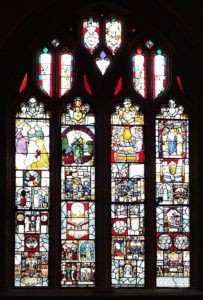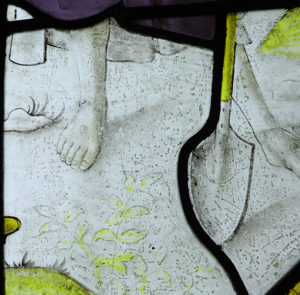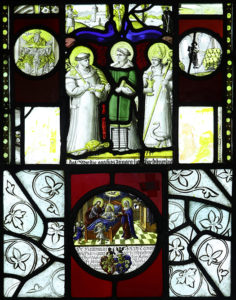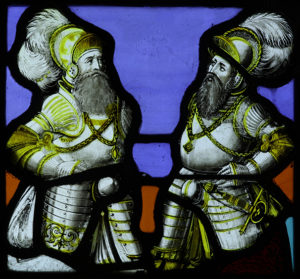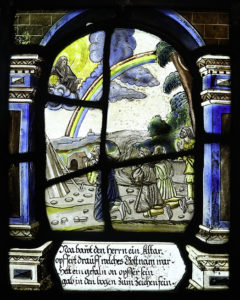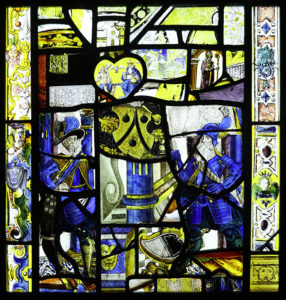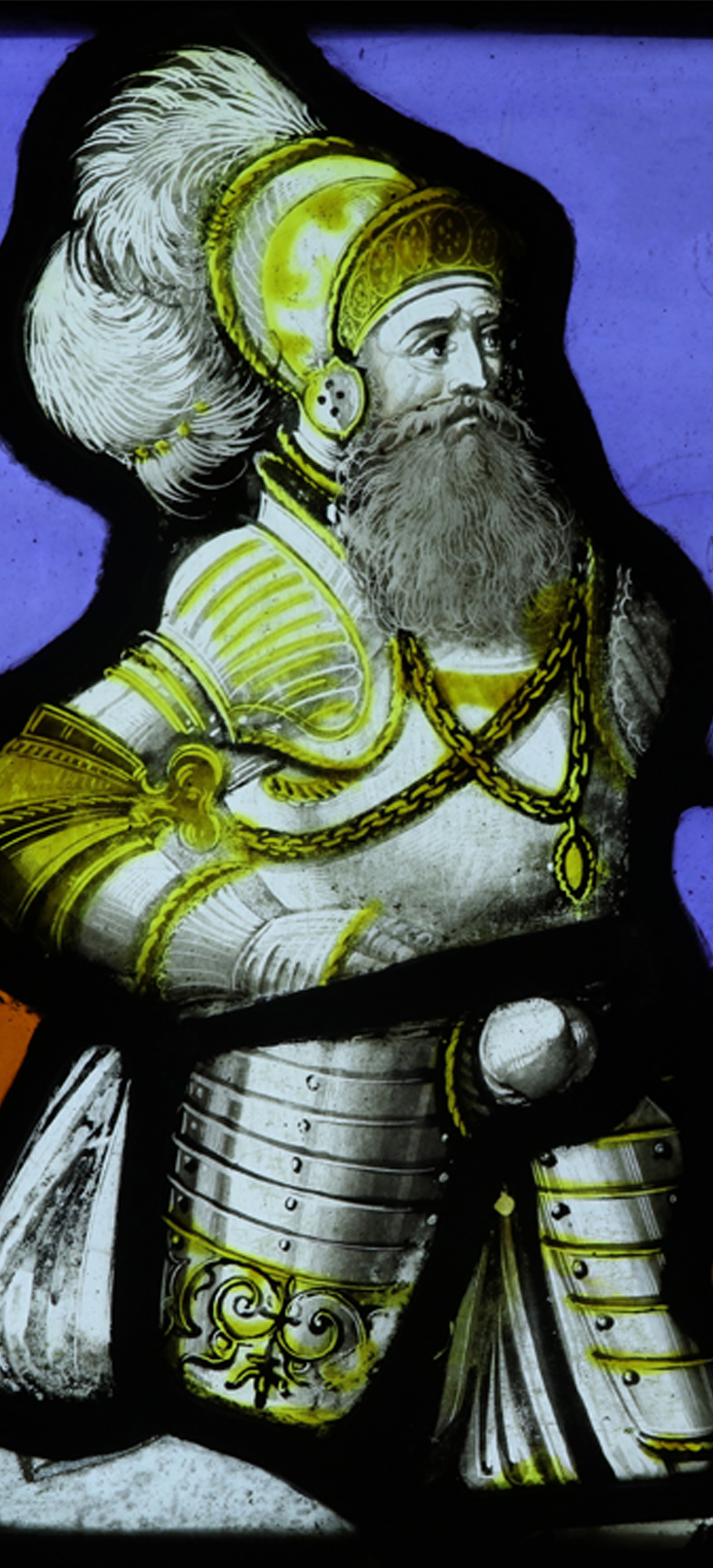
St. Andrew’s Church, Trent, Dorset, EAST Window
17th and 18th Century
The cleaning and conservation of the stained glass, and the introduction of a full bespoke Environmental Protective Glazing System (EPG), incorporating an initial test installation, and minor repairs to the surrounding stonework.
This four light East Window with tracery elements contains highly significant 16th and 17th century European glass. A rare collection such as this is unusually rich for a small church, and comparable with important museum collections. This important window is set on a 19th century ground of medieval inspired naturalistic grisaille. There are extensive remains of Swiss/ German/Netherlandish panels and roundels with most intricate and delicate work in paint, stain and enamel. A large number of small panels are assembled into a collage with scenes from the passion of Christ, Heraldic devices, Grotesques and Cornucopia, domestic scenes, and clerical figures.
The condition of the glass body was good throughout and durable, although there was slight external pitting. The paint and enamel detail was very delicate, and there was evidence of abrasion in earlier glass. There were more serious underlying problems however with the painted detail; regular cycles of wetting and condensation on the window evidenced by heavy lichen and general grime build up on the internal surface and signs of condensation run-off at the cills. The traceries were particularly badly affected, being very dirty and barely legible. Some painted detail had already been lost. The lead-work, mainly stemming from the 1947 restoration, showed some slight bowing, and rust coloured discolouration was regularly visible, but was generally in good order. Historic interventions suggested a sensitive approach to repair. These included the re-leading of multiple disparate panels assembled together as a collage, subtle lead-work with fine lead sections employed, neat solder joints, some previous trimming of glass kept strictly to a minimum. Infills in the form of newly painted grisaille in the style of 14th century models were also introduced where necessary. The fact that some very fine painted detail remains suggests if any previous cleaning took place, that it was restrained. Dated graffiti on the glass informed of restoration programmes in 1848 and 1947.
The new bespoke EPG system provides environmental protection and security for the panels into the future. It has removed the need for the stained glass to be a weather shield. Any further corrosion damage, microbiological attack and loss of paint has been arrested, and a long future for the glass has been secured. Setting the main lights in frames allows easy dismounting of the historic glass, to allow proper cleaning and maintenance.
Environmental monitoring was carried out in conjunction with Tobit Curteis Associates.
Also see our other project – St. Andrew’s Church, Trent, Dorset, WEST Window :-
http://www.holywellglass.com/work/st-andrews-church-trent-dorset-west-window/



